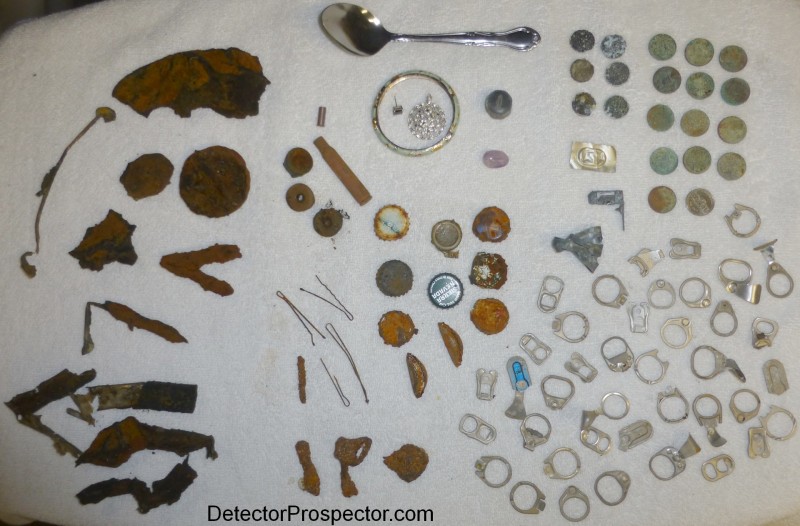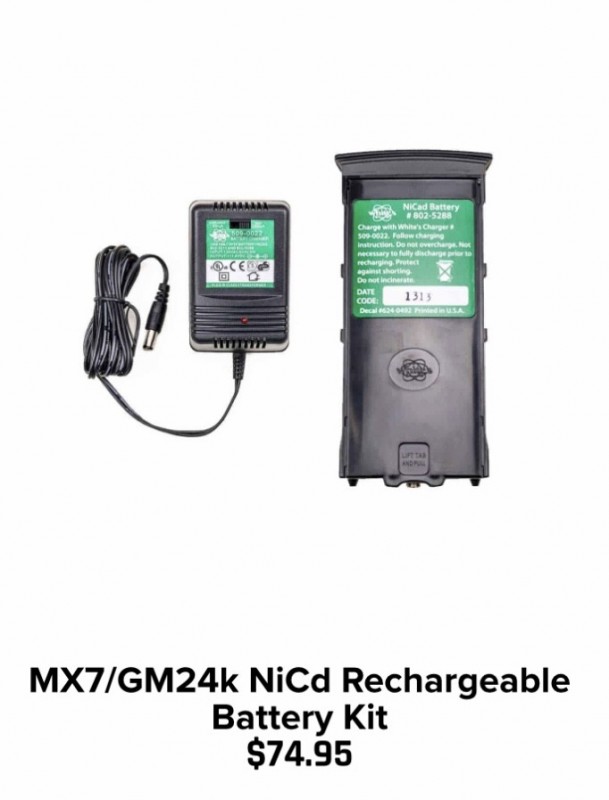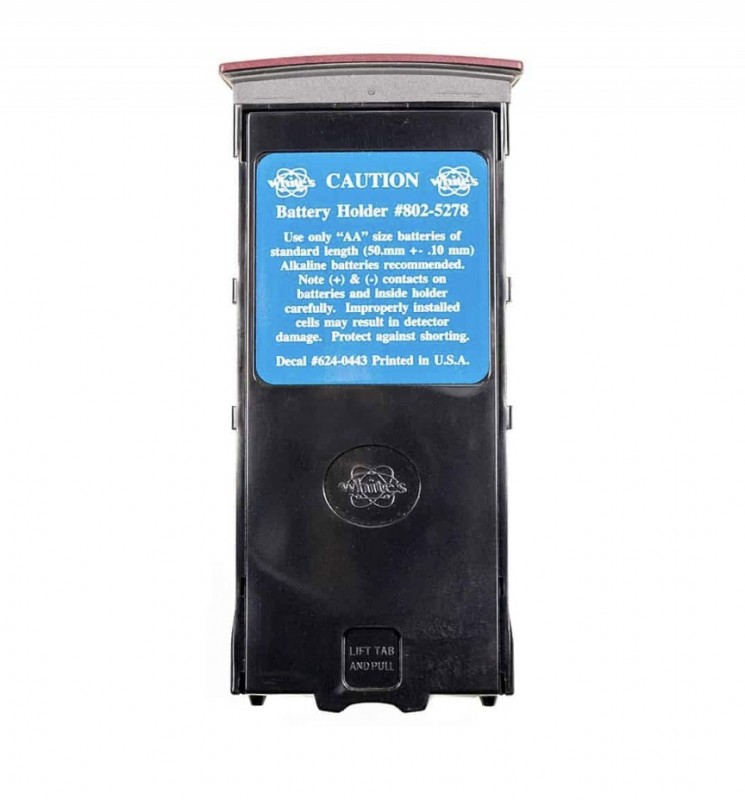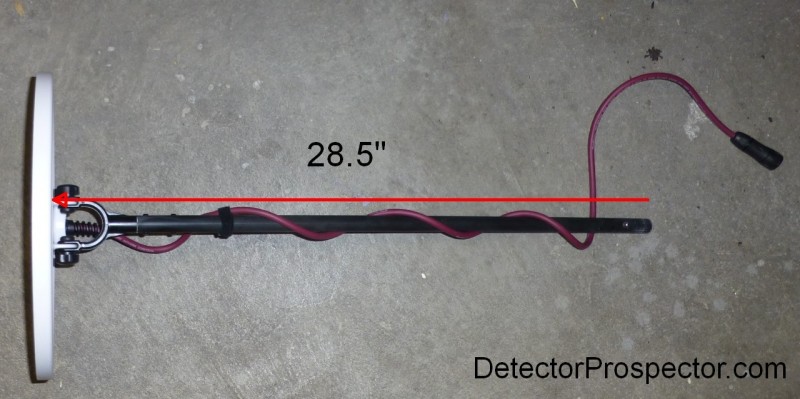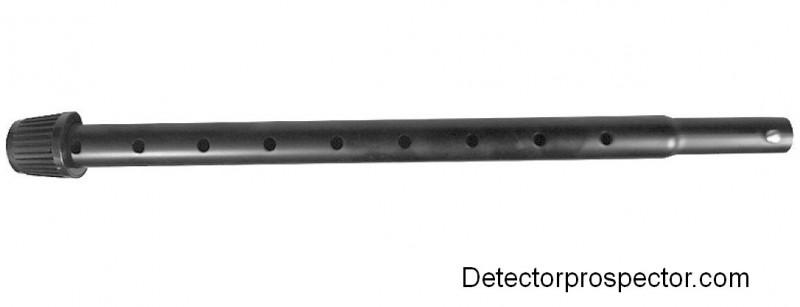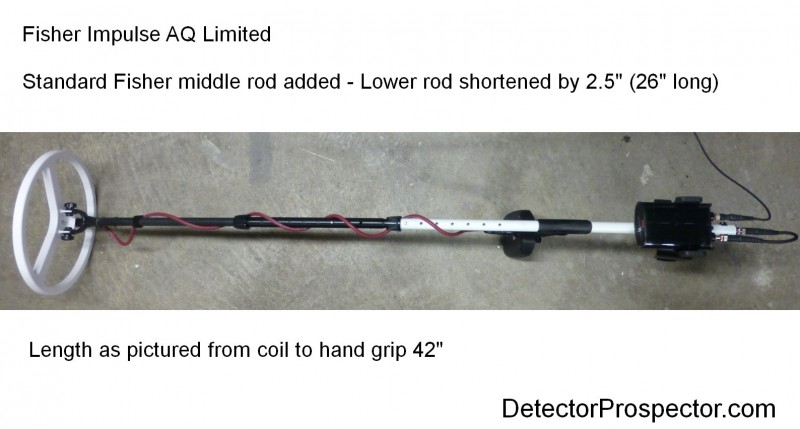-
Posts
19,723 -
Joined
-
Days Won
1,568
Content Type
Forums
Detector Prospector Home
Detector Database
Downloads
Everything posted by Steve Herschbach
-

PulseDive 8” Coil Review
Steve Herschbach replied to Treasure_Adventure's topic in Nokta / Makro Metal Detectors
Great review with solid, useful information. Thank you! -
I don’t know how to say any more than I have that I was not intentionally digging anything that I perceived as making a double beep sound. I was not using all metal, I was using tones mode. So no, I would not say the double hole pull tabs made a double beep sound. If they had, I would not have dug them.
-
I did not dig any double beep signals. I would not say I analyzed everything perfectly from every angle, but was only digging targets that appeared to give a clean, single signal. In the denser target areas that was not quite that simple though as the “good” signal was right in the middle of several “not good” signals, so I was picking what sounded like something good out of the middle of a mess. In a couple, cases I got more than one target out of the same dig hole.
-
Yes, I am quite pleased with the target mix. I liked seeing all the nickels in particular. Hunting fresh water lakes is different than saltwater. You do not get the massive storm cuts that can be so productive for saltwater beach hunters, so things are more hit and miss. Tahoe had record low water levels a couple years ago, and the dry land hunters were able to walk all over stuff that is back underwater now. There was a ring bonanza at the time. I’m new to hunting Tahoe however, so still have a lot to learn about where the better hunting locations may be. I’m mainly waiting for late July and August when the water will be much warmer and my eyes fully healed from cataract surgery, so I can get back to mask and snorkel work. I’d like to try some more secluded “secret beach” locations. The gold will come. Sometimes I’m hot, sometimes I’m not.... but it really is just a matter of time. The secret to being a super detectorist is only showing the good times! I’ve had some stretches where I thought I’d never find gold ever again. Then... boom!
-
Remember a PI knows nothing about aluminum, gold, iron... it is all time constants. An aluminum can.... yes, that is actually a high VDI/long time constant target. Zinc pennies are borderline targets, very sensitive to the ATS setting in particular. I think the knobs move too easily... just a hair one way or the other makes a difference. The way mine is set a new penny with a clean copper surface goes low tone, ones showing much zinc at all go high tone. It should be possible to knock out the zincs completely, but that is too aggressive for me. I prefer all metal mode for most use. But I can see a potential use for every one of the modes.... going to be very site specific. I thought Tone mode was kind of useless until this morning. In Tone mode the iron response is mostly low tone with some minor high tone mixed in. Though this varies with the target. Some ferrous will be high tone with just some ferrous hints. In Mute mode the iron response is mostly silent with some minor high tone breaking through. This may make some ferrous appear better than it would appear in tone mode. In Volcanic Sand mode the iron response should be fully silent which is necessary to reject volcanic ground. This should be the quietest mode in dense ferrous, but I have yet to experiment with it. I got into magnetite so thick this morning I had to drop sensitivity to default and go to 11.5 uS, and there was still a little ground response. Targets were also thick though so depth was not a huge concern, and it was still there anyway. I did drop into Volcanic for just a moment, but it seemed to offer no real advantage at the time so I switched back out. No doubt about it, tones can get real busy, and it messes with the cleaner all metal responses, so I can understand people not liking it. But I had fun with it today.
-
I am not worried about depth with the Impulse AQ. Rest assured it delivers the goods there, and in some sandy areas it goes deeper than you really want to dig. I hate that stuff where the hole ends up wider than it is deep. Anyway, for my initial runs I wanted to use the AQ as intended - to hunt ring type targets. The AQ has two basic types of discrimination. First, the all metal "shaping" discrimination familiar to PI hunters and some VLF all metal hunters. You use various audio "tells" to pick and choose targets. The classic being the elongated target "double blip" often used to identify nails and hair pins. Alexandre was kind enough to provide this sketch on this thread you should read: This works pretty well, but not as well as we could wish. It is great for items positioned well and at the right depth. But what about nails or hair pins at a 45 degree angles and at max depth? Plenty of deeper items sound good near the edge of detection depth where the signal gets smaller and softer. Bottle caps can have you digging to the center of the earth. What about two targets close together? I was nugget detecting after a guy who passed up a nail and sure enough it was a classic nail double blip signal. Funny thing when I dug it there were two gold nuggets weighing about 1/4 ounce total sitting next to each other! Flat items on edge, like a quarter on edge, can double blip. So these ideas are good but do not think they are perfect. The main problem is we all pat ourselves on the back for those items that sound bad and we pass them up... but were they really? You honestly do not know. But the assumption they all were bad skews the thinking about this type of audio discrimination. The reality is some good stuff gets passed up, but we are accepting that as a trade for not digging everything. It all seems fine until somebody does like I did and finds something great right after you passed it up. I'm 90% sure I did not dig a 25 ounce gold nugget that a newbie found instead. Why? He was too stupid to know it was a coffee can! Anyone that thinks they have this stuff 100% figured out is kidding themselves. A very good trick is to know that a hot PI mono coil will signal small stuff on each edge. So small shallow targets will signal under each edge of the coil. Also a double blip deal, but different than the elongated item double blip. You have to be paying attention, but with a little practice it becomes second nature to pass these up if that is what you wish to do. This is going to be the majority of the wire ties, hair pins, foil... just all manner of surface stuff, mostly very small bits and very often lighter stuff that does not want to sink. It could also be any recent drops, like an ear ring, chains, small pendants... just anything small and near surface. Now, that seems crazy and maybe it is. Again, remember the idea here is to hunt rings, and so the focus is on nice, defined signals as in the diagram above. And here is the real kicker. These really are VLF targets and if that is what you are after, the shallow stuff, break out a VLF! The second part of that is an assumption the area has already been hunted, maybe a lot, with VLF detectors. They have already found the good, shallow finds, and really skewed the numbers for the shallow stuff into being trash. So, let's skip all the shallow stuff using the coil edge sensitivity trick, and elongated items that double blip. Now let's give up a little depth, and use the AQ tones mode with default ATS and Reject settings. I prefer tones because a lot of ferrous will make both high and low tones, and mute lets the high tone through, and fakes me out. Tones will be better on at least some bottle caps at giving a high tone with a low tone edge to it. Lots of ferrous will give solid low tones. If you hate digging coins in the surf, dimes and quarters and clean zinc pennies will give a clean low tone. So will silver rings unfortunately. Some ferrous will not low tone. Hair pins and wire in particular. But if we use the audio tricks above, you can get rid of nearly all the wire by eliminating double blips and shallow stuff. That leaves bottle caps as a main offender, some you get a ferrous edge, some you do not. And then there is a weird selection of deeply rusted or mixed content items, like plated steel. Which is the problem with many bottle caps by the way. Round rusted lids from old steel cans. Some ferrous has corroded so much the metal is near gone, and it reads more in the ring range. And ferrous stuff with holes can be a problem. That may all sound horrible, but I used all the tricks together for eight hours of detecting at two very different fresh water lake locations. One much like a Hawaii style beach with people to match. Hair pins and bottle caps are the offenders. The other more a locals beach, with tons more trash, especially big ferrous stuff. I hate to admit it, but I often detect without finding great stuff. But I always know if I am doing well by looking at my trash. For nugget detecting, if you are not finding gold nuggets but finding bullets, you are doing everything right. And for rings, I want to see nickels, pull tabs, and unfortunately, corroded zinc pennies. If I am digging them, I am confident I will find the rings. In fact, when looking for gold nuggets if I can't find bullets.... somebody has cleaned the place out. And if I can't find pull tabs and nickels when looking for rings.... hmmmm. I don't mind finding trash per se, because the worst thing of all for me is a place where nothing goes beep. The first area I hunted about five hours and finds were few and far between. Remember, I'm cherry picking what sounds like a good item based on the above. There were tons of shallow surface targets, but I left them looking for those deeper defined signals. The other location I hunted this morning for about three hours, but I found more than half the targets there. I liked it better, so will be going back. Very heavy magnetite concentrations, so lots of VLF type signals that the VLF crowd is missing entirely. So here is the haul after 8 hours digging. Not a ton of digs, just what I thought sounded good using all the tricks above. In my opinion, no worse than a VLF... but a VLF would not have found most of this stuff. Click or double click for larger version of the picture at bottom. 14 nickels 6 corroded zinc penny bunch of tabs bracelet, two ear rings, and a cap with insignia couple shell casings (pray you do not get into a lot of .22 casings) and 3 shotgun ends A few hairpins that sounded good. A few bottle caps that sounded good. Some odd ferrous that sounded good, including four fist sized things I discarded at the beach. And the way that spoon is bent - cooking drugs I'd say! The Hawaii style beach frankly all metal and just using audio tricks would have been good. No big ferrous to speak of. The low tones were probably mostly dimes and quarters. The other beach? Land of ferrous. Huge number of low tone responses. The Tone Mode paid off there in spades as far as I am concerned, and allowed me to pick the nickels and tabs remarkably well. My bottom line on all this folks is I am only getting started, but this machine is an easy read for me. But I am very, very used to this kind of stuff. That's good though because I can tell you that compared to prior machines, if you are a PI type person who thrives on this type of detecting, I think you are going to like the AQ. There is a lot of audio to work with. You VLF guys... I don't know what to tell you. It's not VLF, and it requires a whole different skill set. Some of you will just hate it. Others may be pleasantly surprised. All I can say is the picture below is a no BS look at the target mix, and to my eyes at least... lack of gold excepting... I am really happy with what I am seeing. In general I will probably revert back to all metal hunting in most places, but if I get into the junk, Tone Mode will be a genuine aid. More tools for the PI tool kit, and frankly I'm still a newbie with the machine. It is only going to get better!
-
Heck, by then I hope we are seeing the digital version. Alexandre pulled out the stops on this one for what can be done with analog, and the only way to take it to the next level is some serious digital signal processing. What I can separate with my ears, a microprocessor and the right software should be able to do as well or better.
-

Who Has The Impulse Aq?
Steve Herschbach replied to Ferrous Grump's topic in First Texas - Bounty Hunter, Fisher & Teknetics
I’ll take a guess just because I’ve been doing that for many years anyway. I’ll put my $1 bet on official announcement by year end and delivering to dealers in Spring 2021. -
Yup! Both the AA and rechargeable... though I do not like NiCads. Better off with the AA pack and using your own rechargeable batteries in it.
-
Well, mine is fine now, and it is very stout, not a bit of wiggle. Several reasons. First, water hunting can be rough. A stumble and half the time the detector gets used for support. If this lower rod gets broken nothing I have for spares is going to work, and I hate getting caught short. Second, I think I will cut the one I have down another couple inches, making it totally unusable without the middle rod. A full length spare would allow me to go back to stock configuration, which although shorter than I prefer, is useable for me. Just have to keep it a foot ahead of my feet. Actually better for mask and snorkel work, where my extended version may be too long. And last... for when I get another coil. Swapping coils is an extra pain in the butt with the yoke setup.
-

Whites V3i Vs The XP Deus
Steve Herschbach replied to RobNC's topic in Metal Detector Advice & Comparisons
No problem with V3i longevity. In a nutshell, the Deus is tops for extracting non-ferrous from ferrous. However, it’s target id accuracy is so-so at best, and so it’s not a favorite with groomed park hunters for that reason. The V3i, as a multifrequency machine, is better at target id, not near as good in dense ferrous as the Deus. So basically it depends on desired types of detecting. Leaving the cool settings aside, for me the V3i is a top notch jewelry machine. I rarely use mine for anything else. -
First Texas is aware of all this. It was one of the reasons for doing a limited release of the AQ - to collect feedback. That said, I do not hold my breath waiting on anything from detector companies, especially accessories. I’m still waiting for a 6x10 coil for my Equinox almost three years later. More to the point, I’m still trying to get a part number and price for the existing 28” lower rod so I can get another one.
-
I’m sure somebody could. Or I could have cut the lower rod and added an external sleeve to make it longer. At some point that also will introduce wobble but at this time it’s the easiest way to get a longer lower rod. In my case I would need a 30” total length and so would have to add a 2.5” sleeve.
-
So basically nobody read my post on the other thread? Let me know when you guys find a replacement rod assembly or longer version of the unique yoke style lower rod that works. The AQ wiring routes through the handle and to the power and headphone outlet at the end of the rod. It is not a matter of just swapping the handle to a different rod, and nobody makes a compatible lower rod that is longer. No other reasonably easy longer rod options exist at this time other than what I have described.
-
You are forgiven. Forums and manufacturers both, so many shutting down you can’t keep them straight!
-
Congratulations on the AQ Mark, and welcome to the forum! And good luck!!
-

Who Has The Impulse Aq?
Steve Herschbach replied to Ferrous Grump's topic in First Texas - Bounty Hunter, Fisher & Teknetics
First Texas Forum............. Impulse Thread......... go here for Cygnus -
Fisher Impulse AQ stock, fully extended, 48.5" to elbow bolt, 38.5" from grip to coil Standard Fisher middle rod added, 52" to elbow from coil, 42" from grip to coil As mentioned in this thread detailing the Impulse AQ rod measurements, I find the two piece rod assembly too short for my liking. I added a standard Fisher middle rod section. However, adding the middle section made the AQ longer than I prefer. Actually it is fine, but there is zero ability to make it shorter as I am set comfortable at the shortest extension. There are times I might want it shorter. It also cannot adjust out full length anyway due to the cable not being that long. So I ran it out as far as the cable would go, and determined that cutting 2.5" off the lower rod would give me maximum extension, while also allowing me to shorten the rod up to a perfect position for me. I left the detector assembled and used the middle section rod holes as a guide/template to drill a new hole for the rod detent pin. Then I cut the rod off by 2.5" so the lower rod is now 26" in length, and re-positioned the pin. This allowed me to set the lower rod three holes from the shortest middle rod setting, in theory leaving six more longer adjustments if the cable would go that long. You can see the pin positioning in the middle rod in the photo below. Long story short, at that setting the AQ is exactly the same length as my Equinox at maximum length, with 42" from coil to hand grip, which is where I normally run the Equinox. I can adjust the AQ a couple settings both longer and shorter with no problem. Somebody shorter than I am would want to cut the lower rod down even more. If you wanted it to stow better, cutting it down to more like 20" would allow it to go to the full length adjustment and then also to the shortest setting. I figure I can always cut more off later if need be but I can't put any back so will leave it here for now. Even so, I am committed as without the middle section it really is too short for me now. If any of that is confusing, let me know your specific question, and I will try and make it clearer. That middle rod is not easy to find for something used on so many First Texas (Fisher, Bounty Hunter, Teknetics) detectors. Black, gold, and gray versions are made. I got my spare at Kellyco for $9.99 and I had a $5 off coupon so half off, but with shipping ended up being $12 delivered. https://www.kellycodetectors.com/catalog/middle-rod-only-current-models
-

White’s Electronics Done After 70 Years
Steve Herschbach replied to Steve Herschbach's topic in White's Metal Detectors
And let’s have that be an end to the personal commentary between forum members about forum members. We discuss detectors and detecting here, not each other. Thanks.


